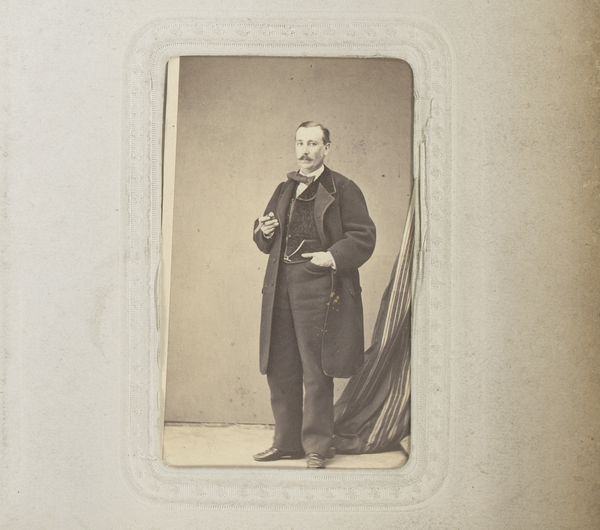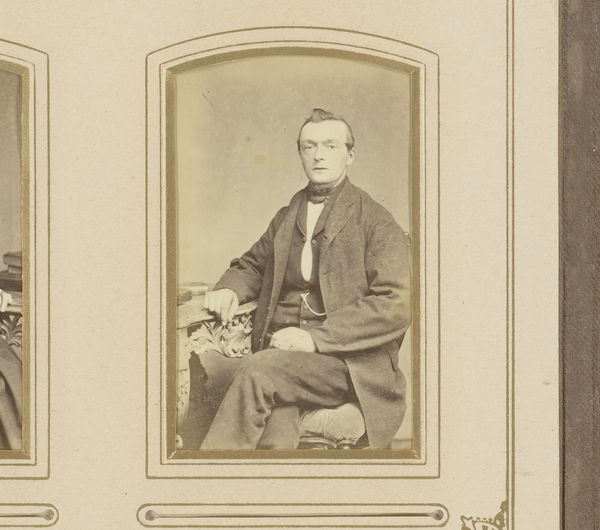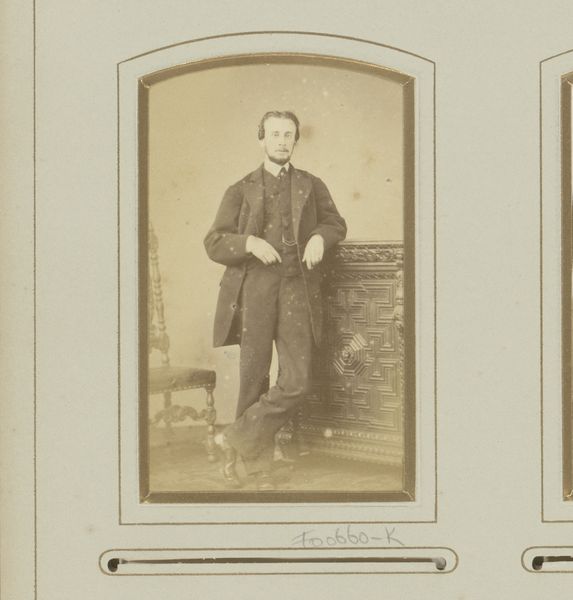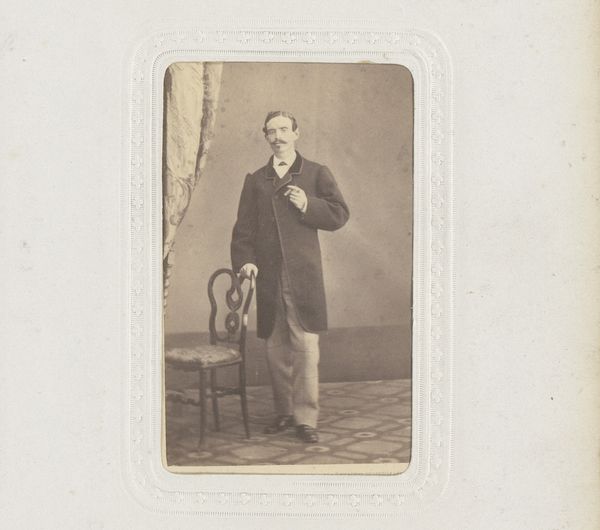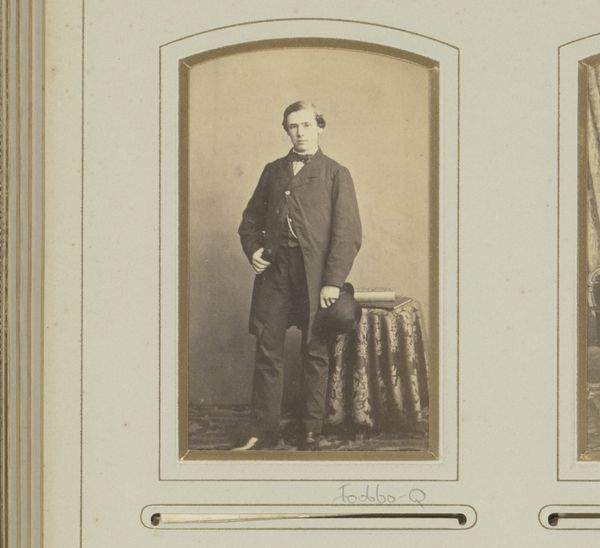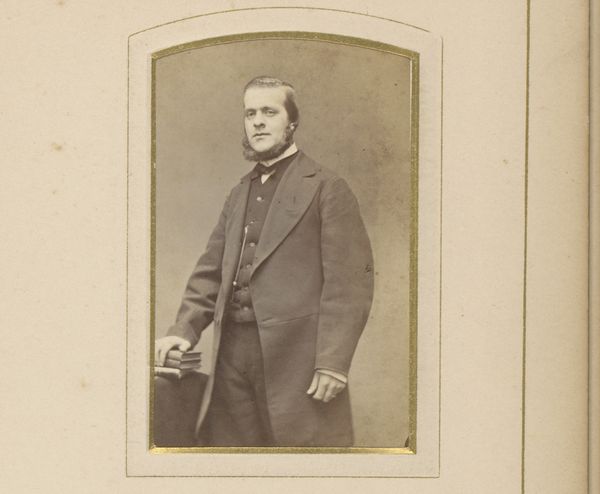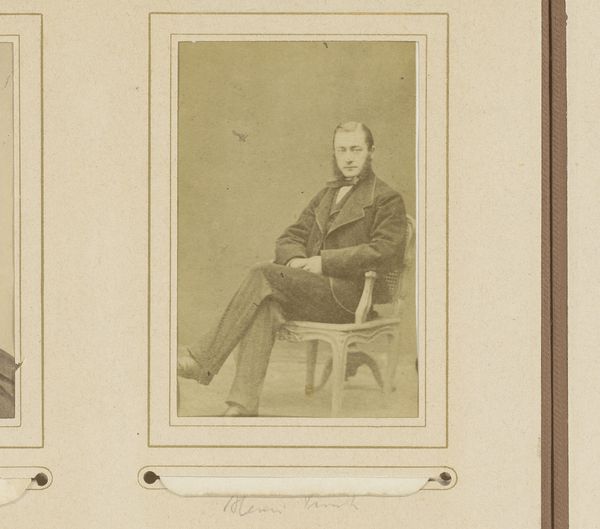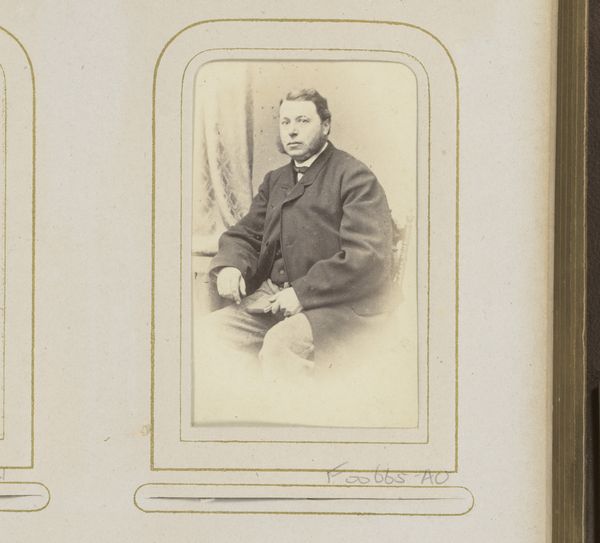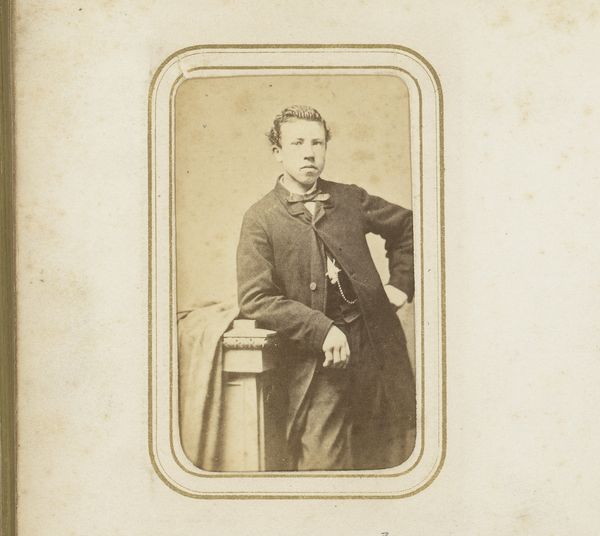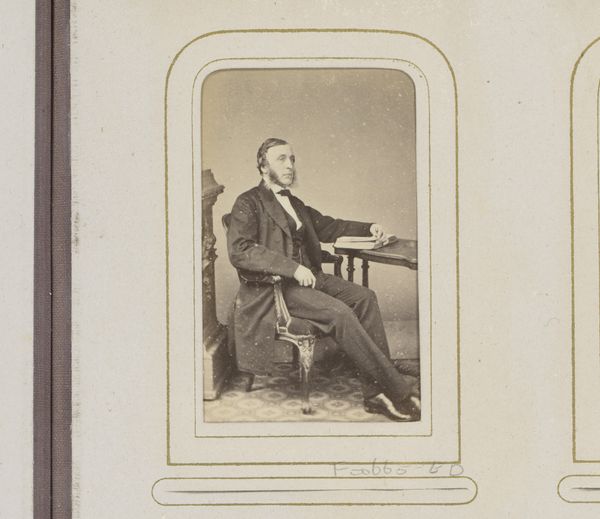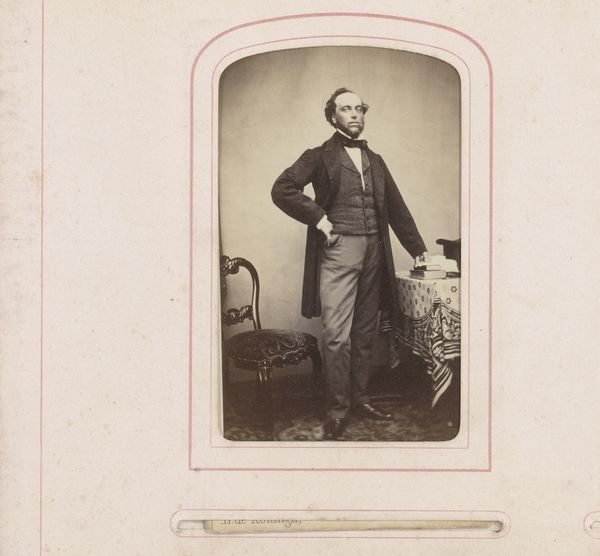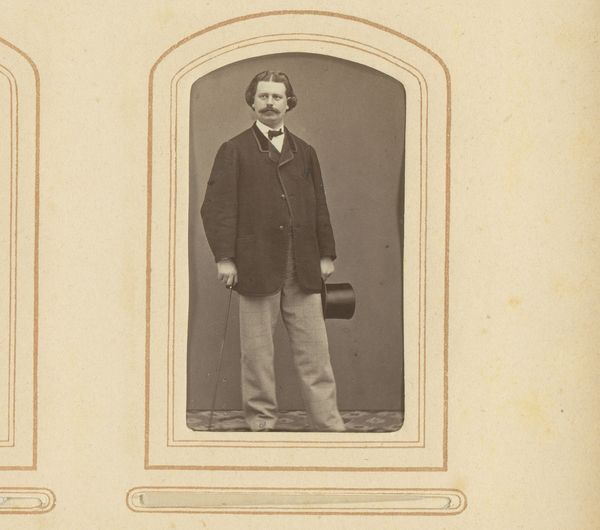
Dimensions: height 85 mm, width 52 mm
Copyright: Rijks Museum: Open Domain
Curator: Welcome. Before us, we have a photographic portrait entitled "Portret van een man, staand bij een stoel," which translates to "Portrait of a man, standing by a chair," created sometime between 1860 and 1894. The work is attributed to Ghémar Frères. Editor: He looks so incredibly bored! Or maybe just supremely indifferent? Is he daring us to judge his questionable cravat? Curator: It’s interesting you pick up on that, as this portrait style was actually intended to project a certain social status and confidence, common within the rising middle class of the time. Editor: Confident, huh? More like he’s bracing himself for a lengthy tax audit! But the light is soft, I like that, and there’s something strangely compelling about how stiff and posed it is. It's almost like performance art, isn't it? Curator: Absolutely! Consider the social context: photography was still relatively new, expensive, and perceived as a somewhat serious affair. So these portraits were more staged than candid. They were conscious declarations. Editor: So it's less about the individual and more about what they represent, that era's definition of "success", I guess? Curator: Precisely! Ghémar Frères, as photographers, catered to this demand, producing portraits that reinforced social hierarchies, where posture, attire, and composition told a very specific story. The chair, the curtain—all props within that visual narrative. Editor: I think this image reminds us that people's efforts to control their image are always a little hilarious, maybe even more now, given how accessible it has become. What we choose to show the world says way more than what we try to hide. Curator: I think I'm starting to agree with your more subversive reading here! It underlines the constructed nature of identity and the roles photography played in shaping societal perceptions during that time. Editor: It’s been illuminating to peek into that very still moment in time, the contrast is like an uncanny and weirdly enduring snapshot of human aspirations, isn't it? Curator: I concur entirely; perhaps by examining past ambitions and values we gain some much needed perspective on how these standards evolved over time.
Comments
No comments
Be the first to comment and join the conversation on the ultimate creative platform.
